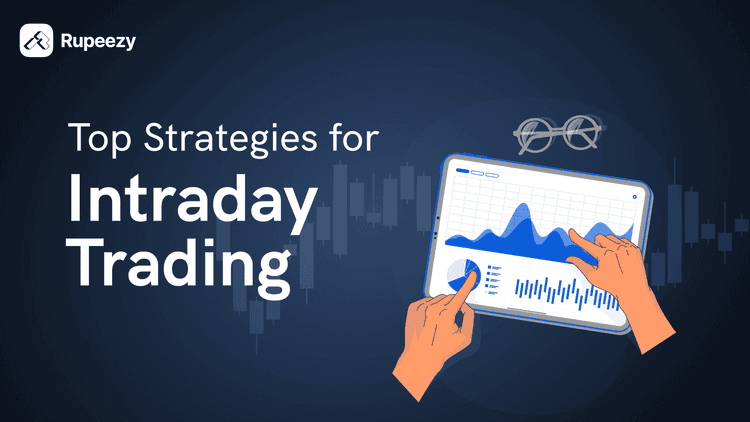PVI: Positive Volume Index Calculation, Indicator & Example


00:00 / 00:00
Picture two Indian traders, Rohit and Priya, who are constantly searching for new strategies to enhance their trading performance.
They’ve heard about an indicator called the Positive Volume Index (PVI) from a successful investor in the Rupeezy community.
Intrigued by the concept, Rohit and Priya decide to explore what is Positive Volume Index and learn how it can help them make more informed trading decisions.
This article will take you on Rohit and Priya’s journey to understanding PVI, its basic principles, and how to calculate it step-by-step.
Basic Principles of Positive Volume Index (PVI)
The Positive Volume Index is a technical analysis indicator that aims to identify trends in the stock market by analyzing the relationship between trading volume and price movements.
Developed by Norman Fosback in the 1970s, PVI is based on the premise that smart money, or informed investors, are more active on days when trading volume is higher than the previous day.
Key principles of PVI include
- Focus on days with increased trading volume
- Aim to identify bullish market trends
- Less effective during bearish trends
Calculating PVI: A Step-by-Step Guide
To better understand PVI, let’s take a look at the step-by-step process of calculating this indicator:
Identify the trading volume for two consecutive days: In order to calculate PVI, you’ll need to have the trading volume data for at least two consecutive days.
For example, let’s assume the volume on Day 1 is 10,000 shares, and on Day 2, it’s 12,000 shares.
- Determine if volume increased or decreased: Compare the trading volume of Day 2 to that of Day 1. In our example, the volume on Day 2 is higher (12,000 shares) than on Day 1 (10,000 shares), so there is an increase in volume.
- Calculate the price change percentage: Next, calculate the percentage change in price between the two days. For instance, if the stock price on Day 1 is ?1,000 and on Day 2, it’s ?1,050, the percentage change is ((1,050 – 1,000) / 1,000) x 100 = 5%.
- Compute the PVI value: If the volume on Day 2 is greater than Day 1, add the price change percentage to the previous day’s PVI value. If you’re starting from scratch, assume an initial PVI value of 100.
In layman’s terms, you can think of PVI as a way to gauge the activity of smart money in the market. When trading volume is on the rise, PVI can help you identify potential bullish trends, providing you with valuable insights for your trading decisions.
By using the Rupeezy trading platform, you can easily access the necessary data and tools to apply PVI to your trading strategy.
Interpreting PVI: Bullish and Bearish Signals

Image credit: Pixabay
When using PVI as a part of your trading strategy, it’s essential to understand how to interpret its signals.
Here are some key takeaways for interpreting PVI in bullish and bearish markets, along with examples to help you better understand the concept:
- Bullish signals: When PVI is rising, it indicates that smart money is actively participating in the market, which often leads to an uptrend in prices. A consistent increase in PVI may serve as a confirmation of a bullish market, suggesting it could be a good time to consider buying or going long on certain stocks.
Example: Suppose you’re tracking a stock with a steadily rising PVI over the past few days. The stock’s price has also been on an upward trajectory.
In this case, the increasing PVI could be interpreted as a bullish signal, suggesting that it may be a favorable time to enter a long position.
- Bearish signals: On the other hand, a falling PVI may indicate that smart money is stepping back from the market, and uninformed investors are more active. In this case, the market may be less reliable, and price trends could be short-lived or prone to reversals.
Example: You notice that a stock’s PVI has been dropping consistently over the past several days, while the stock’s price has also been declining.
The decreasing PVI suggests that smart money is exiting the market, which may imply that the current downtrend could continue, and it may not be an ideal time to enter a long position.
It’s important to note that PVI, like any other technical indicator, should not be used in isolation. Instead, combine PVI with other indicators and market analysis techniques to make more informed trading decisions on Rupeezy.
Advantages and Limitations of Using PVI in Trading
Advantages
- Identifying trends: PVI helps traders identify potential bullish trends in the market by focusing on days with increased trading volume.
- Smart money activity: By concentrating on the activity of informed investors, PVI can provide valuable insights into market trends driven by smart money.
- Simplicity: PVI is relatively easy to understand and calculate, making it accessible to traders of all experience levels.
Limitations
- Less effective in bearish markets: It is mainly focused on identifying bullish trends and may not be as effective in predicting bearish trends or market reversals.
- Lagging indicator: Like most technical indicators, PVI is a lagging indicator, which means that it may not provide timely signals for market entry or exit.
- False signals: It may generate false signals, especially in highly volatile markets, leading traders to make less accurate decisions.
Combining PVI with Other Technical Indicators
To overcome the limitations of PVI and improve the accuracy of your trading decisions, it’s essential to combine PVI with other technical indicators.
Some common positive volume index indicators that can be used alongside PVI include:
- Moving Averages: Moving averages, such as Simple Moving Average (SMA) and Exponential Moving Average (EMA), can help smooth out price data and identify trends over time.
- Relative Strength Index (RSI): RSI measures the speed and change of price movements, helping traders identify overbought or oversold conditions.
- MACD (Moving Average Convergence Divergence): MACD is a momentum indicator that can help confirm the strength of a trend by comparing short-term and long-term moving averages.
Table: Comparison of PVI with Other Technical Indicators
Indicator |
Focus |
Purpose |
Ideal Market Conditions |
PVI |
Trading Volume |
Identifying bullish trends driven by smart money |
Bullish Trends |
Moving Averages |
Price |
Smoothing out price data and identifying trends over time |
Trending Markets |
RSI |
Price Momentum |
Measuring the speed and change of price movements; identifying overbought/oversold levels |
Both Trending & Range-bound Markets |
MACD |
Price & Momentum |
Confirming the strength of a trend by comparing short-term and long-term moving averages |
Trending Markets |
Practical Examples of PVI in Action

Image credit: Unsplash
Let’s take a look at two practical examples to illustrate how PVI can be used in real trading scenarios:
Bullish scenario: Imagine a stock with a consistently rising PVI over the past 10 days, accompanied by an upward trend in the stock’s price.
In this scenario, the increasing PVI could be a strong indication of a bullish market. To further confirm the trend, you could also check the stock’s moving averages and RSI values.
If these indicators support the bullish sentiment, it may be an opportune time to consider entering a long position.
Uncertain scenario: Suppose a stock’s PVI has been fluctuating without a clear trend, while its price has also been moving sideways.
In this case, relying solely on PVI may not provide you with enough information to make an informed trading decision.
You could use additional indicators like MACD and RSI to gain a better understanding of the stock’s momentum and possible future price movements.
In conclusion, the Positive Volume Index is a valuable technical analysis indicator that helps traders identify potential bullish trends in the stock market by focusing on days with increased trading volume.
However, to maximize its effectiveness, PVI should be combined with other technical indicators and market analysis techniques.
By leveraging PVI and other tools available, traders can better navigate the complexities of the stock market and enhance their trading performance.
Visit Rupeezy for advanced trading tools like Options Strategy Builder, Basket Order, TradingView Terminal and more at Rupeezy app.
Key Takeaways
- PVI is a technical analysis indicator that focuses on days with increased trading volume.
- Developed by Norman Fosback in the 1970s, PVI aims to identify bullish trends driven by smart money.
- PVI is calculated using trading volume data and percentage change in price.
- Rising PVI values can indicate bullish market trends, while falling PVI values may suggest market uncertainty.
- To improve trading accuracy, combine PVI with other technical indicators such as moving averages, RSI, and MACD.
FAQs
What does PVI represent in the stock market?
In the stock market, PVI, or Positive Volume Index, is a technical analysis indicator focused on pinpointing potential bullish trends by concentrating on days when trading volume is higher than the previous day.
How is PVI computed?
To calculate PVI, first, determine the percentage change in price between two consecutive days when the trading volume on the second day surpasses the first day’s volume.
Then, add this price change percentage to the PVI value of the previous day. When starting the calculation, assume an initial PVI value of 100.
What is the purpose of the Positive Volume Index?
PVI is employed to identify possible bullish trends in the market by examining the connection between trading volume and price movements.
An increasing PVI suggests smart money is influencing the market trend, while a decreasing PVI may indicate a rise in activity from uninformed investors and possible market uncertainty.
What information does the Positive Volume Index provide?
The Positive Volume Index (PVI) offers insights into market trends influenced by smart money or well-informed investors.
A rising PVI implies a bullish trend, whereas a falling PVI may signal market uncertainty or less reliable price trends.
How can one calculate the positive volume index?
To calculate the positive volume index, you need at least two consecutive days of trading volume data. When the trading volume on the second day is greater than the first day, calculate the percentage change in price between the two days.
Add this price change percentage to the previous day’s PVI value to determine the PVI.
The content on this blog is for educational purposes only and should not be considered investment advice. While we strive for accuracy, some information may contain errors or delays in updates.
Mentions of stocks or investment products are solely for informational purposes and do not constitute recommendations. Investors should conduct their own research before making any decisions.
Investing in financial markets are subject to market risks, and past performance does not guarantee future results. It is advisable to consult a qualified financial professional, review official documents, and verify information independently before making investment decisions.
Open Rupeezy account now. It is free and 100% secure.
Start Stock InvestmentAll Category









